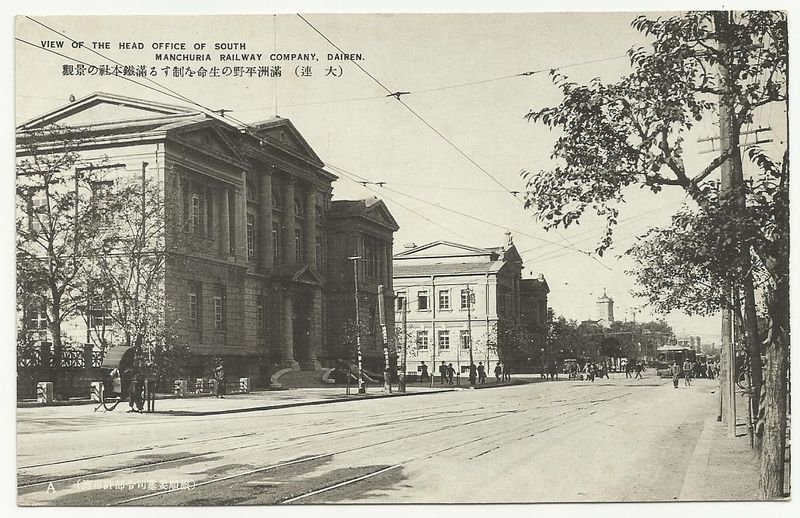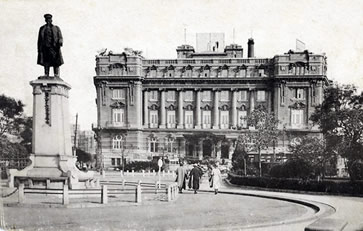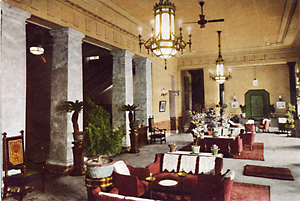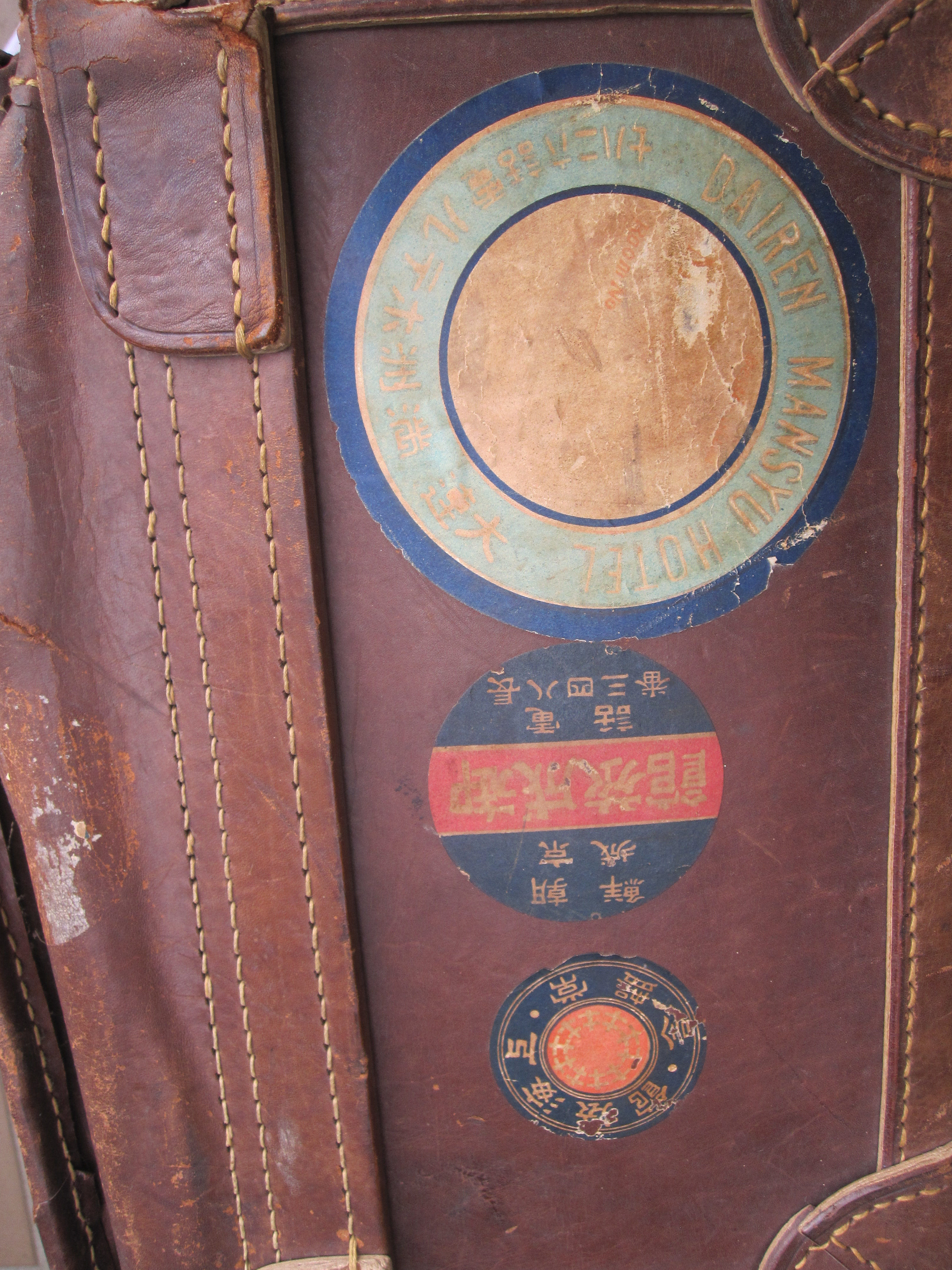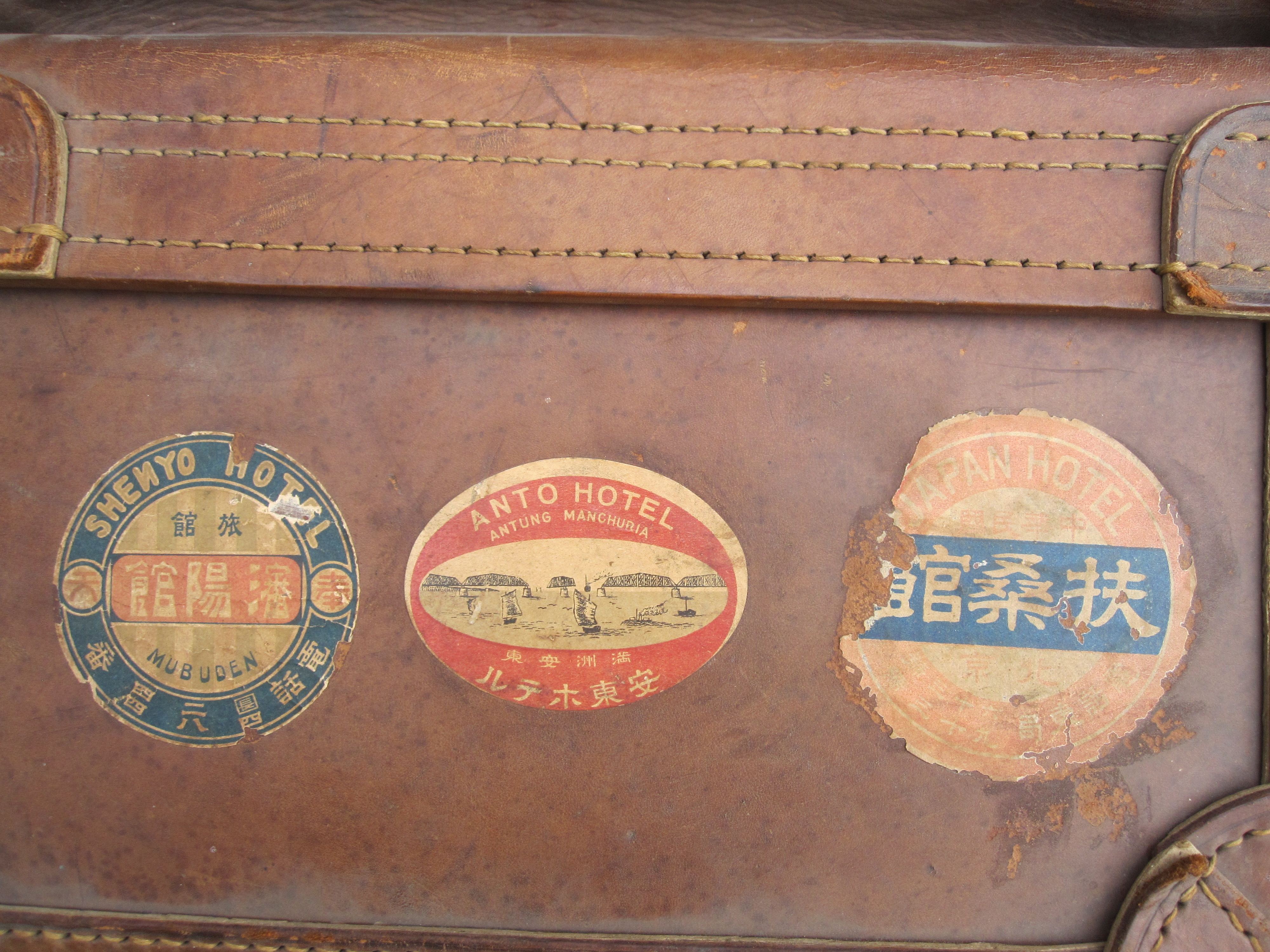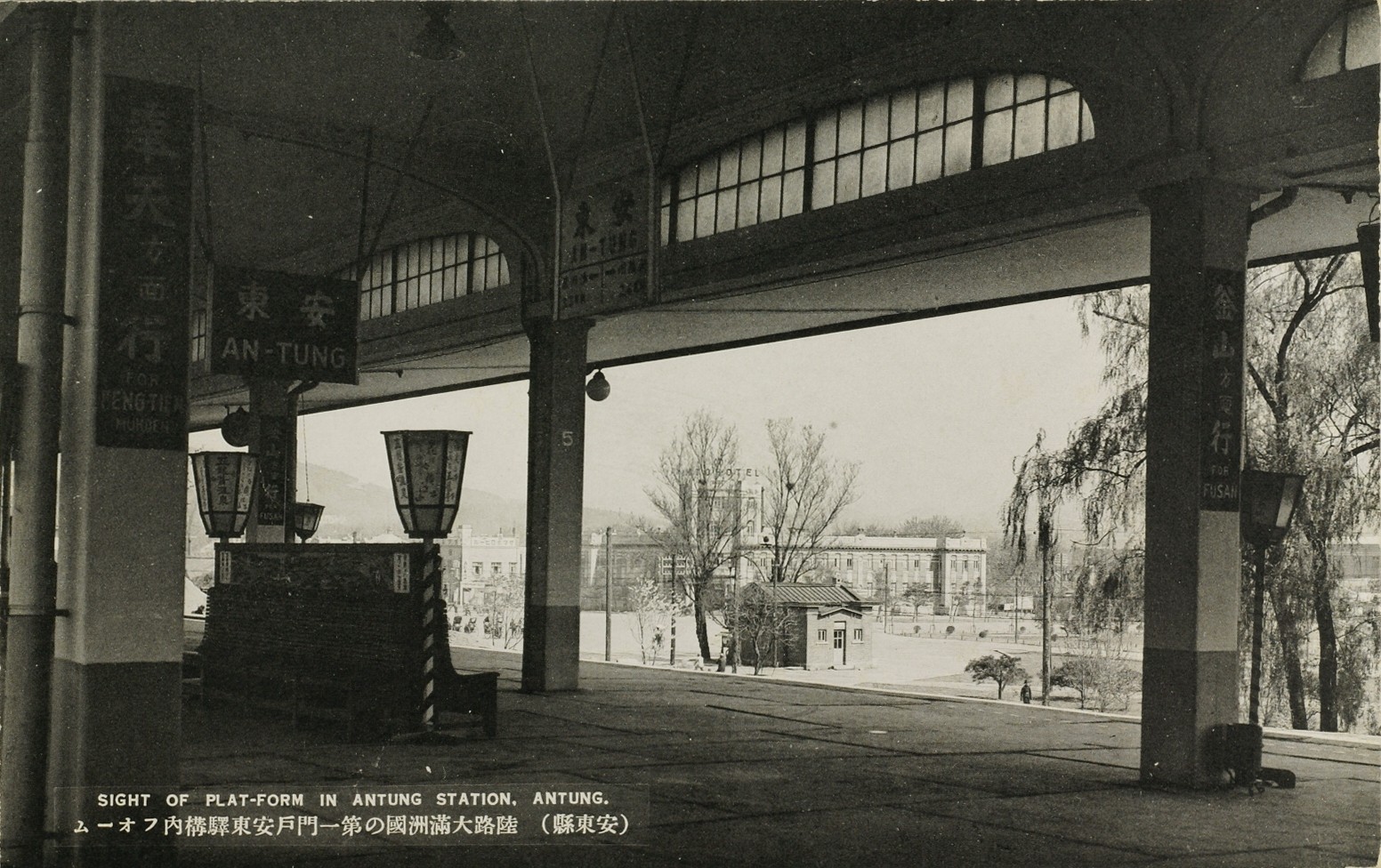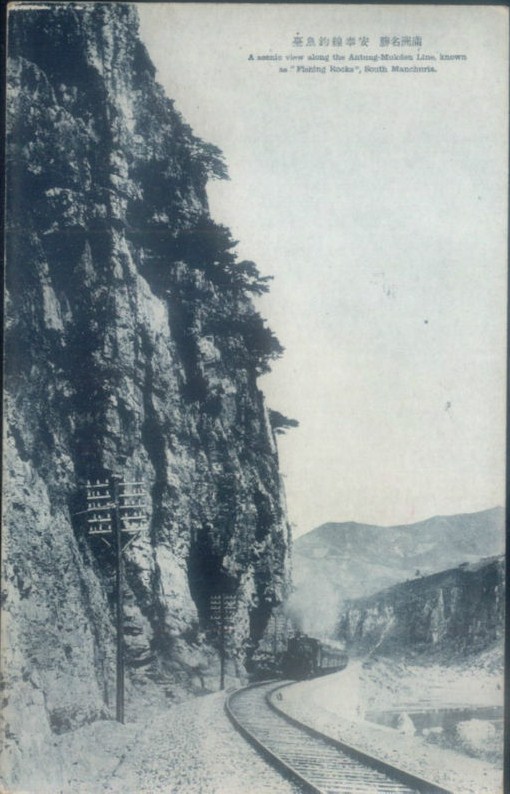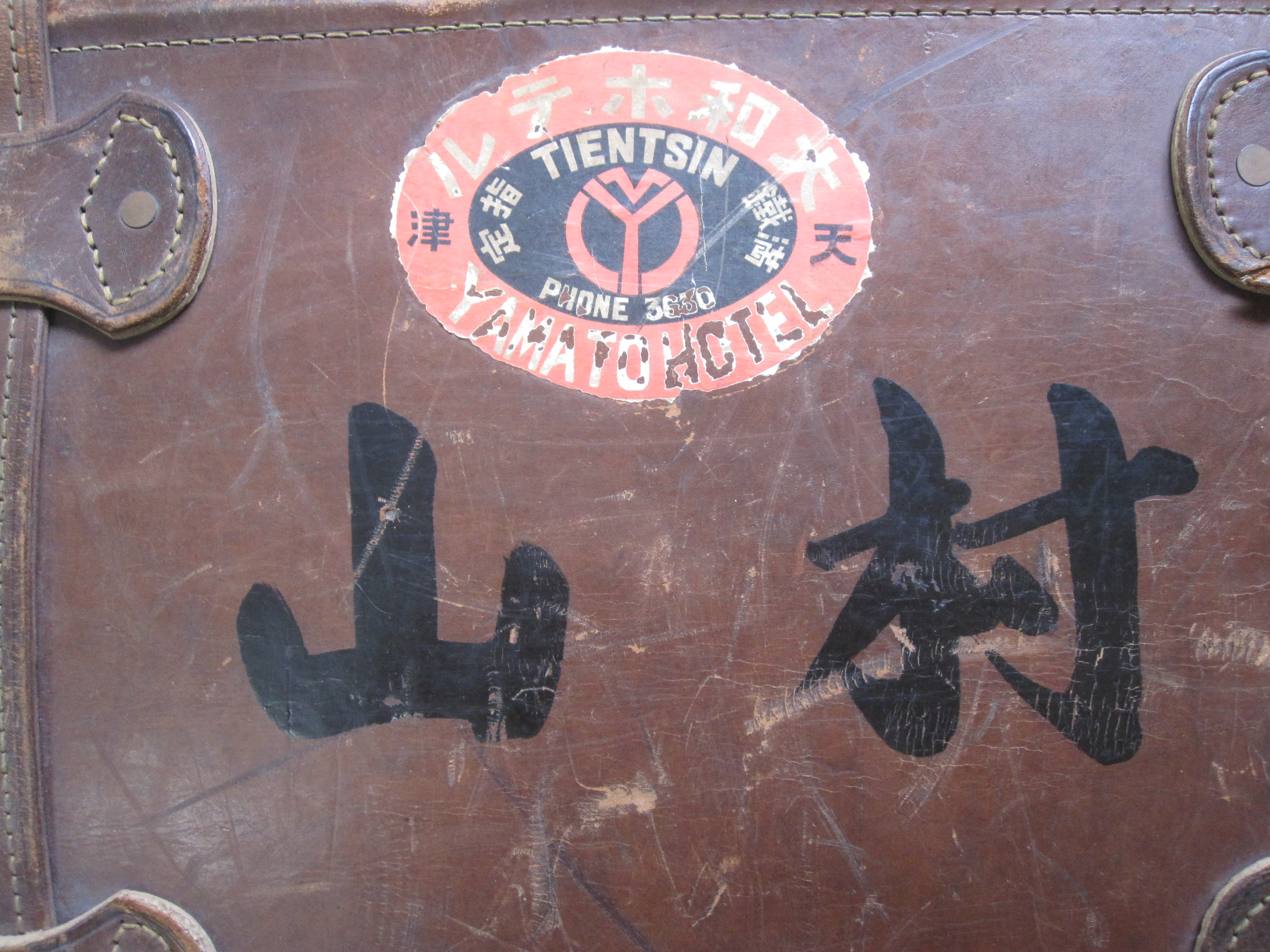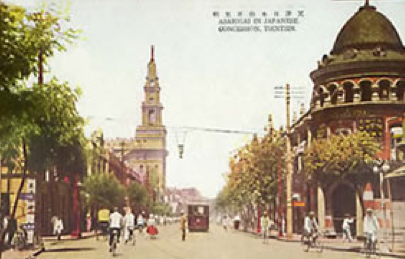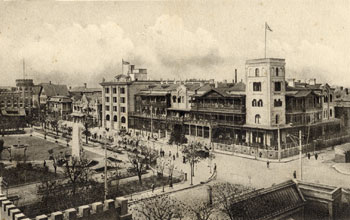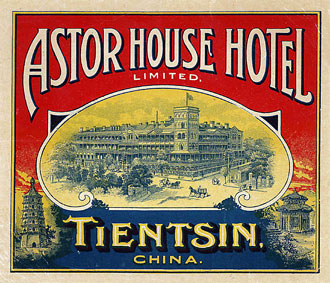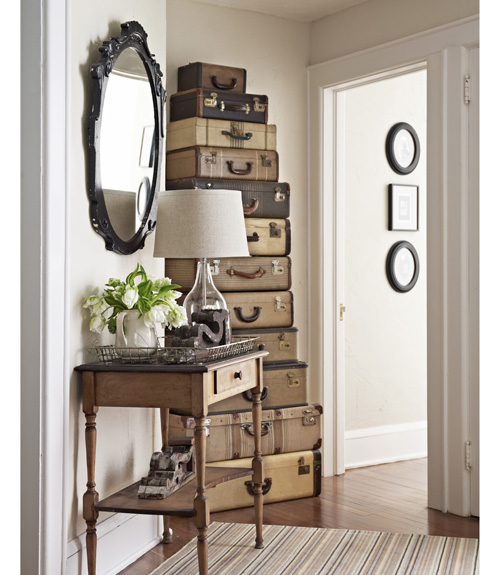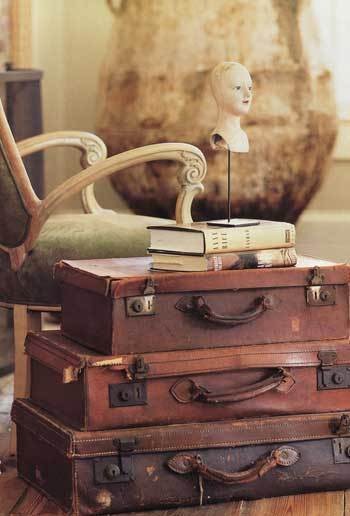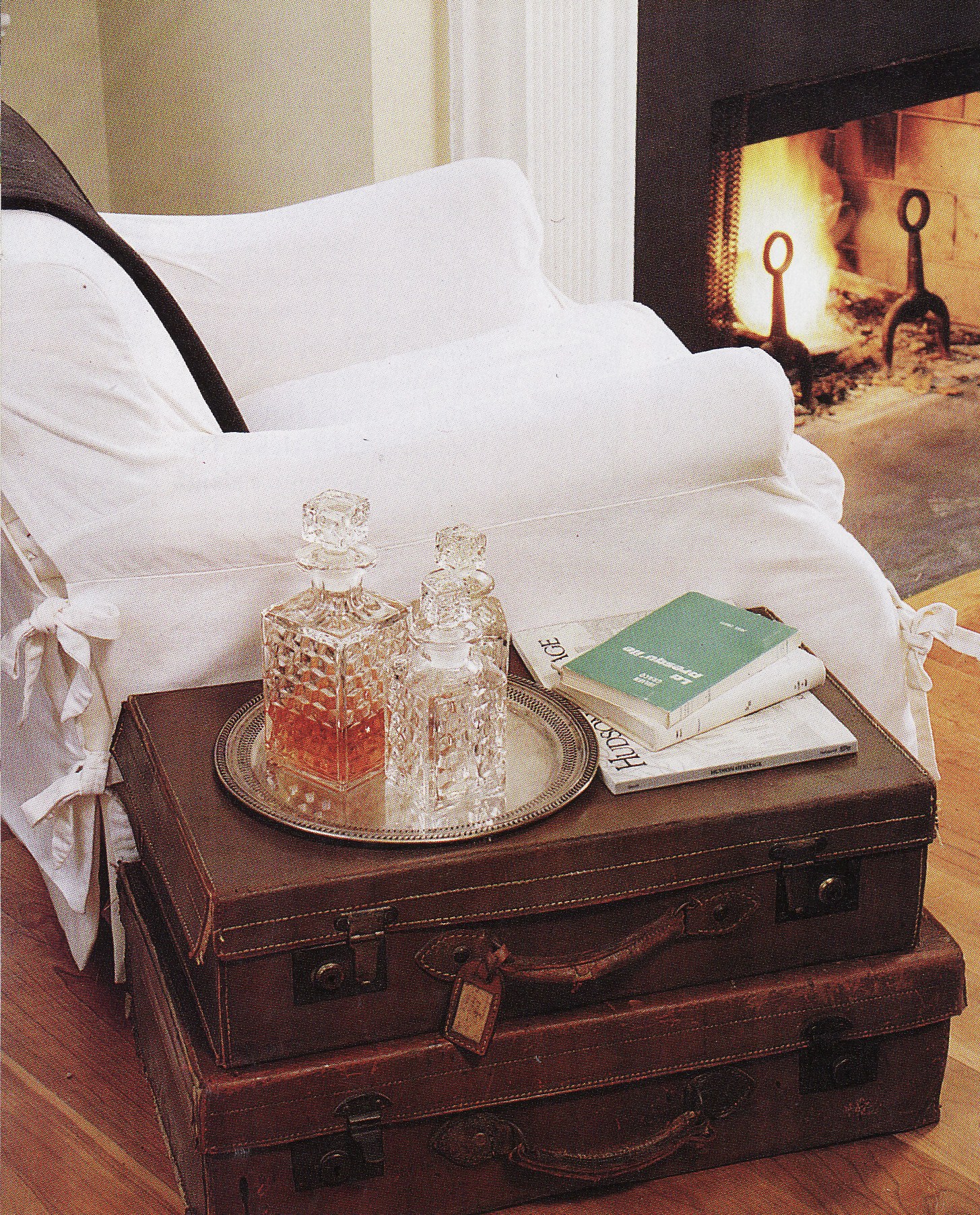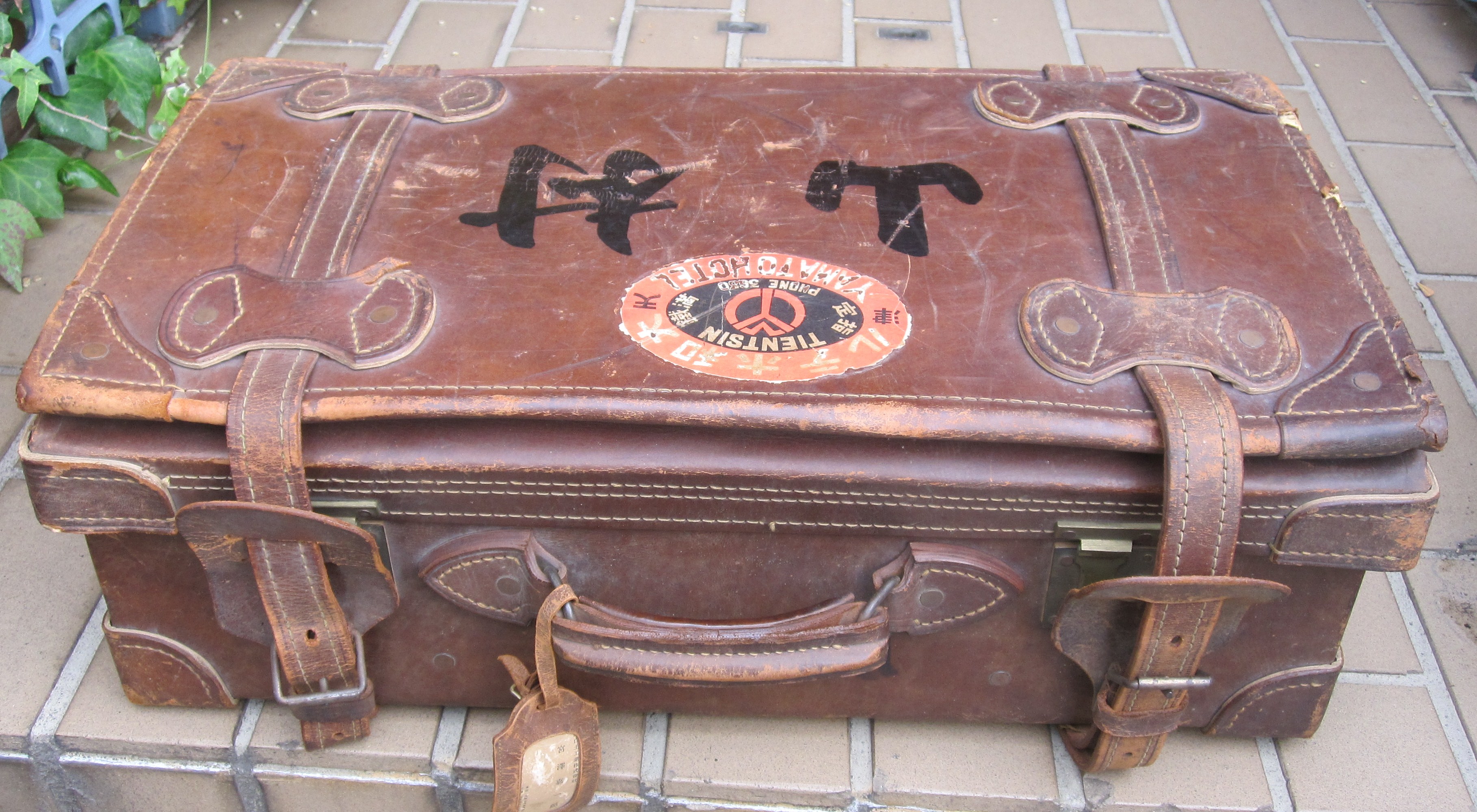
Dear Mr. Yamamura’s suitcase (because that is the name painted on the leather case and somehow, I am sure you belonged to a man), I was lucky enough to stumble across you at the shrine sale the other day, picking you up because you are a beautifully preserved example of early 20th century luggage, but if you could talk, oh, the stories you could probably tell! I bought you for decorating purposes, but in the days you have been in my home, I have become obsessed with trying to research your path across Manchuria and the Tientsin Concession in hopes of dating you more specifically and understanding what might have brought you there. If my Japanese was better, maybe I could even have figured out who you belonged to – a 1920s salary man named Yamamura for one of the big zaibatsu (business conglomerates)? A government official with a mission of imperialist goals?
Did you watch as Japan seized control of Manchuria (the large northeastern corner of present day China) from Russia between 1904 – 1905, taking control of the Russian built railroads and creating the South Manchurian Railway, which established its headquarters in Dairen? Or was that before your time? I think it may have been.
Five Yamato Hotels were also owned and operated by the railway between 1910-1940, serving stops along the line. The Yamato Hotel in Dairen was a showstopper in the grand European style, both on the outside and the inside…
…but you seemed to have stayed in the Dairen Mansyu Hotel, making it seem like perhaps your owner was not such a big wig. I have not been able to find any additional information on that hotel, so it is a dead-end, at least for now.
You definitely spent significant time in Manchuria, as the hotel labels on your suitcase continue to reveal. But was that time during Japan’s years of influence, or after their full of seizure of control in 1931?. The Anto Hotel (red oval sticker below) is located just past the railroad station in Antung, and it would certainly seem to imply that you were there in the 1930s, as the Antung Province was first created in 1934 as an administrative region of the now Japanese controlled Manchuria, newly called the Empire of Manchukuo.
If you look closely at this 1930s postcard, you can see your hotel in the far distance from the station. I wonder, did your room have a good view?
You probably arrived via the station above, on the Mukden to Antung Railway, the main mode of transport, if not the only one, through southern Manchuria at this time. Perhaps you even worked for the railway, as over 35,000 Japanese did by 1910.
I would guess that you travelled through Mukden as well and that the Shenyo Hotel in “Mubuden” (the first hotel sticker on that photo above) was simply a bad English spelling of Mukden.
But things with you get tricky from the largest label found on your lovely lid. The Yamato Hotel chain doesn’t seem to show any properties in the Tientsin Concession, an extremely unusual city as it was an open trading port in the late 19th and early 20th centuries. Like Shanghai, it existed as its own sort of miniature world, with eight foreign concessions in the district, including that of France, Great Britain, Japan, Russia, Italy, Germany, Austria-Hungary and Belgium. Eric Liddel, the missionary runner (remember him from Chariots of Fire?) was born there and I believe President Herbert Hoover lived there in his earlier life.
The international concessions looked nothing like China and a lot like Europe. The Japanese concession certainly looked as Western as the others…
Tientsin had an extremely famous and fancy hotel, the Astor House…
…with quite its own luggage label.
But there is no mention of any Yamato Hotel there whatsoever. My theory is that after the Japanese seizure of Tientsin in 1938, while they respected foreign concessions for the most part until 1941, perhaps they occupied the properties in their enemy’s territories and changed a few hotel names? So my final guess is that you travelled in the late 1930s, just before the war. I am hoping to do more research, but maybe I’ll get lucky and a reader will have some extra insight and/or better language abilities.
So for those of you who have been wading through all this history and had enough, on to the juicy decorating ideas on how to use Yamamura-san’s suitcase. Perhaps Joanna Madden’s stack is a bit excessive, but she does have a special way of arranging large multiples!
I am desperately wishing to visit Chicago to see an extremely dear friend, but also to finally get over to Jayson Home & Garden.
We all know I am a sucker for anything that looks like this – One of those amazing photos you only find in Skona Hem – and I love the pair of cases stacked underneath.
A small stack of vintage luggage makes a lovely and unusual night table. Stores quite a bit of junk too!
In a too “leggy” room, there is nothing like a stack of old leather suitcases, serving as a side table.
And one last photo from one of the old magazine spreads that changed my life (can a magazine spread change your life?), Carolina Bunce’s Hudson River valley house, which did just that. One of these days I’ll feature the whole piece from 1993 and show how she has more recently re-deployed her amazing American antiques in an unlikely setting out in California, having already featured a few of her rooms here.
The shame of my situation is that the flea market dealer had a second smaller suitcase, with a broken handle, so I didn’t buy it. In retrospect, it was easily repairable, but more than that, I wonder what clues it might have held about Mr. Yamamura…
Image credits: 1, 5-6 & 9. me, 2. via eBay seller yangshulin1971, 3-4, 10-12. via AN AMERICAN IN CHINA: 1936-39 A Memoir, 7. via flickr photostream of Kernbeisser, 8. eBay seller yuhong1962, 13. via Country Living February 2011, photo credit: Lucas Allen, 14. via Lonny magazine June/July 2010, 15. via Skona Hem, 16 & 17. so sorry, missing credit as I picked these up on Pinterest somwhere

